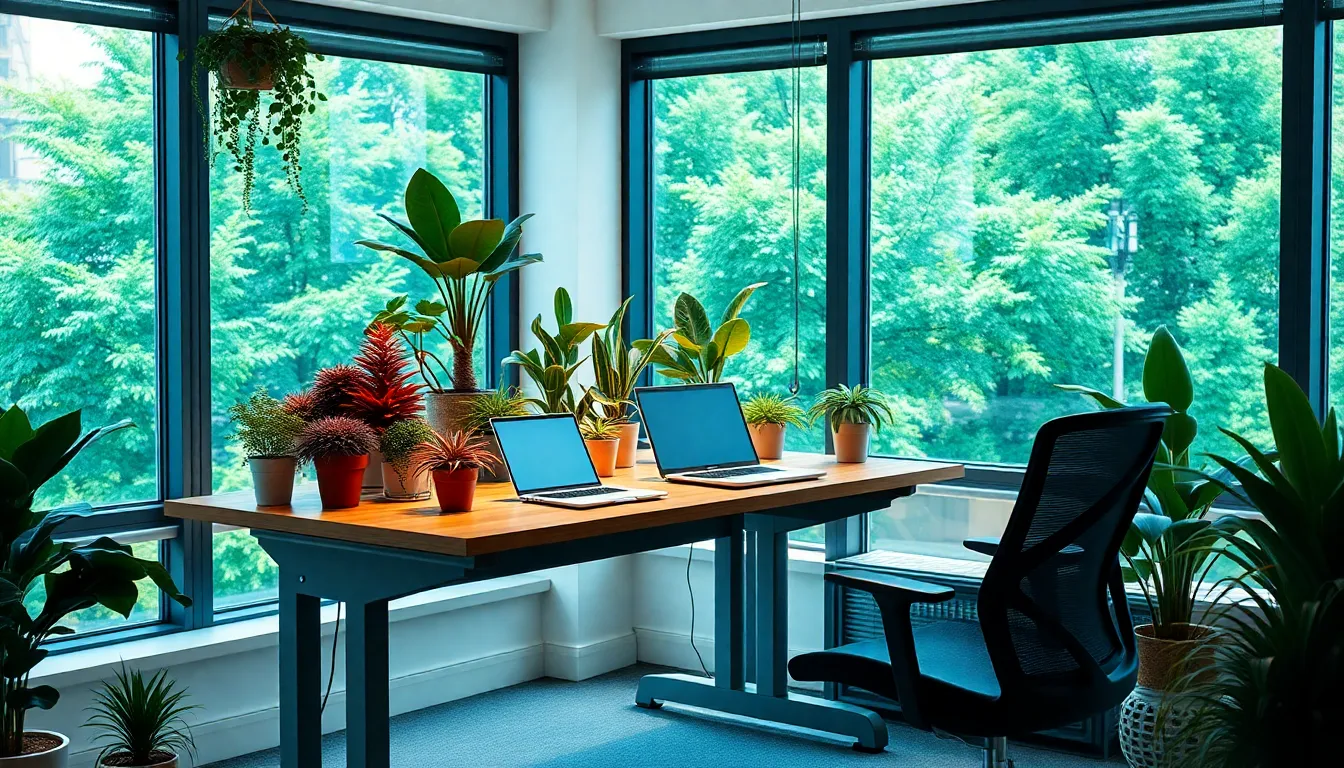
Transform Your Workspace: Inspiring Office Design Ideas for Productivity and Well-Being
In today’s fast-paced work environment, the design of an office plays a crucial role in shaping productivity and employee well-being. A well-thought-out workspace can inspire creativity, foster collaboration, and enhance overall job satisfaction. As companies strive to create inviting and functional spaces, the quest for innovative office design inspiration becomes essential.
From open layouts that encourage teamwork to cozy nooks for focused work, the possibilities are endless. Incorporating elements like natural light, greenery, and ergonomic furniture not only elevates aesthetics but also promotes a healthier work atmosphere. Whether it’s a tech startup or a traditional corporate office, the right design can transform how teams interact and thrive.
Office Design Inspiration
Modern office design emphasizes efficiency, creativity, and comfort. Innovative layouts encourage collaboration while enhancing employee satisfaction.
Open Concept Layouts
Open concept layouts prioritize flexibility and communication. These designs allow natural light to flow, reducing the need for artificial lighting and increasing energy. They accommodate various work styles, supporting both individual tasks and group projects. Notable examples include tech companies like Google, where teams thrive in shared environments that foster spontaneous interactions.
Collaborative Spaces
Collaborative spaces facilitate teamwork and enable dynamic project development. These areas often feature movable furniture, writable walls, and multimedia technology. Companies like Microsoft utilize dedicated spaces designed for brainstorming and workshops, promoting creativity among employees. Incorporating elements such as lounge areas, huddle rooms, and informal meeting spots drives engagement and strengthens relationships within teams.
Creative Workspace Ideas

Incorporating creative elements into office design enhances productivity and fosters a collaborative atmosphere. Here are some innovative approaches to consider.
Biophilic Design
Biophilic design integrates natural elements into workspaces to promote well-being and productivity. Incorporating plants in various forms—such as living walls, desktop greenery, or potted plants—creates a calming environment and improves air quality. Natural light sources, such as large windows or skylights, boost mood and energy levels. Water features, like indoor fountains, contribute soothing sounds and enhance sensory experiences. Studies show that biophilic design can lead to a 15% increase in productivity and significantly lower stress levels among employees.
Flexible Furniture Solutions
Flexible furniture solutions support dynamic work environments and adapt to various tasks. Modular desks, which can be rearranged easily, encourage collaboration and allow employees to personalize their spaces. Adjustable-height desks promote movement, catering to different working preferences. Movable partitions create versatile spaces that accommodate both group activities and quiet work zones. Ergonomic chairs with adjustable features ensure comfort throughout the workday. These adaptable solutions not only optimize space but also stimulate creativity and improve employee satisfaction.
The Importance of Office Design
Office design significantly affects employee well-being and productivity. Thoughtfully designed workspaces foster a positive environment that encourages creativity and collaboration.
Impact on Employee Well-Being
Office design plays an essential role in employee well-being. Elements like natural light reduce stress levels and enhance mood. Biophilic design, incorporating plants and natural materials, creates a calming atmosphere. Ergonomic furniture helps prevent discomfort and injuries, promoting physical health. Collaborative spaces encourage social interactions among team members, leading to a sense of community and belonging. Prioritizing these aspects contributes to higher employee morale and job satisfaction.
Enhancing Productivity
Effective office design boosts productivity through strategic layouts and features. Open concept designs facilitate communication and teamwork, allowing ideas to flow freely. Incorporating designated quiet areas enables focused work, increasing efficiency. Flexible furniture solutions support different work styles, accommodating a variety of tasks throughout the day. Well-placed technology enhances collaboration, making it easier for teams to achieve their goals. Overall, a well-thought-out office design directly correlates with improved work output and organizational success.
Color Schemes and Aesthetics
Color schemes significantly influence the aesthetics of an office environment. Properly selected colors enhance productivity, stimulate creativity, and improve employee morale.
Popular Color Trends
- Neutrals: Shades like gray, beige, and white create a calming atmosphere and allow for versatility with other accent colors.
- Bold Shades: Deep blues, vibrant greens, and rich reds add personality and can become focal points in common areas or offices.
- Pastels: Soft tones like mint green, light pink, and baby blue promote tranquility and can soften the overall ambiance.
- Earthy Colors: Brown, rust, and olive enhance the biophilic design by connecting indoors with nature, improving air quality, and creating organic vibes.
- Monochromatic Palettes: Single-color schemes, varying in shade and intensity, provide a cohesive look while allowing creativity through texture and materials.
The Psychology of Color in the Workplace
- Red: Stimulates energy and passion, effective for encouraging action in creative and dynamic areas.
- Blue: Promotes focus and calm, ideal for workspaces that require concentration and productivity.
- Green: Represents balance and harmony, enhances well-being while reducing stress levels.
- Yellow: Evokes optimism and creativity, stimulating brainstorming and innovative thinking.
- Purple: Denotes luxury and sophistication, often used in executive offices to establish elegance.
Understanding color psychology ensures intentional choices that contribute positively to office dynamics and employee experiences.
Investing in thoughtful office design is essential for fostering a productive and positive work environment. By prioritizing elements like natural light greenery and collaborative spaces companies can create a workplace that not only enhances employee well-being but also drives creativity and engagement.
As trends evolve the focus on flexibility and aesthetics will continue to shape how workspaces are designed. Embracing innovative solutions and understanding the psychology of color can further elevate the office experience.
Ultimately a well-designed office is more than just a space; it’s a catalyst for success and a reflection of a company’s values and culture.




